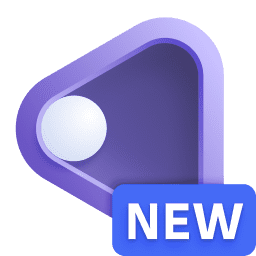Manage Prometheus extensions
- Latest Dynatrace
- 4-min read
- Published Feb 01, 2022
Dynatrace provides you with a framework that you can use to extend your observability into data acquired directly from a Prometheus endpoint. With it, you can bring the Prometheus data into Dynatrace at scale and in context with all other data.
- To take full advantage of the Dynatrace Prometheus extension, you need a OneAgent on the monitored box, but it can also work in an agentless manner.
- Check Dynatrace Hub to see if your technology is already covered by an existing extension. If this is not the case, you can easily build your own Dynatrace Prometheus extension.

Extension Manager
Latest Dynatrace
Now you can use the dedicated Extensions app to manage your extensions. It provides a similar activation and configuration workflow as Dynatrace Hub in the previous Dynatrace. Additionally, it gives you direct access to extension health monitoring.
- To use the app:
- In Dynatrace Hub
 , select and install the app.
, select and install the app. - The Hub listing provides information on the permissions required to use the app (the Technical information tab).
- In Dynatrace Hub

Before you begin

Add extension to environment

Define monitoring source

Advanced properties

Autodiscovery

Activate extension
 Before you begin
Before you begin
Decide which of your hosts will provide the Prometheus data for the extension.
Prometheus extensions can run locally on a OneAgent (recommended) or remotely on an ActiveGate.
- When run locally, the extension connects to the Prometheus interface automatically. Make sure the Extension Execution Controller (EEC) is enabled at the environment or selected host level. For more information, see Extension Execution Controller.
- When monitored remotely, the ActiveGates belonging to an ActiveGate group that you'll designate for remote monitoring need to be able to connect to the host where Prometheus metrics originate.
Required permission: Change monitoring settings
 Add extension to environment
Add extension to environment
Dynatrace Hub provides a unified workflow to enable and manage extensions that ingest Prometheus data into your Dynatrace environment.
- In Dynatrace Hub, search for a Prometheus extension. You can use the "Prometheus" keyword to filter results.
- Select and install the extension you're interested in. This enables the extension in your monitoring environment.
- Add a monitoring configuration so that the extension can begin collecting data.
 Define monitoring source
Define monitoring source
Decide how you want to monitor your host: local or remote.
Local monitoring
- Select the host, host group or management zone for which you will run the extension, or choose to monitor the whole environment. The host needs to be running a OneAgent that is enabled to run extensions.
- Select Next step.
- Select Add endpoint.
- Define the Prometheus endpoint providing metrics and authentication details. For more information on supported authentication schemes, see Authentication. Authentication details passed to Dynatrace when activating monitoring configuration are obfuscated and it's impossible to retrieve them.
Remote monitoring
- Select Monitor remotely.
- Define the Prometheus endpoint providing metrics and authentication details. For more information on supported authentication schemes, see Authentication
- Select Next step.
- Select the ActiveGate group to determine which ActiveGates will run the extension. When done, select Next step.
 Advanced properties
Advanced properties
Select Define to configure optional advanced properties:
-
Timeout in seconds: The maximum time (in seconds) to wait to return data. Default = 10 seconds.
-
Retries: The maximum number of retries for a query if it fails (total time for a query is
timeoutSecsxretries). Default = 0 retries.
 Autodiscovery
Autodiscovery
Autodiscovery is a feature that automatically resolves the DNS endpoints. If autodiscovery is defined, the URL becomes the DNS name.
Select Define to configure DNS endpoints:
-
Auto discovery type: Only the
DNStype available. -
DNS type: The type of DNS query to perform. Only the
Atype is available, which corresponds to IPv4 addresses. -
DNS port: Specifies the port assigned to all IPs resolved by the DNS.
-
DNS refresh interval (s): Sets interval time in seconds to the frequently changing IP addresses.
 Activate extension
Activate extension
Provide final configuration details.
- Description Text explaining details of this particular monitoring configuration. When troubleshooting monitoring, this can give your teams details of this particular monitoring configuration.
- Feature sets In highly segmented networks, feature sets can reflect the segments of your environment. You can use them to limit your monitoring to particular segments. Feature sets are predefined for each extension. For more information, see Prometheus data source reference.
When done, select Activate.
Monitoring configuration as JSON
The extension activation wizard contains a dynamically updated JSON payload with your monitoring configuration. See Manage Extensions to learn how to use it to activate an extension using the Dynatrace API.